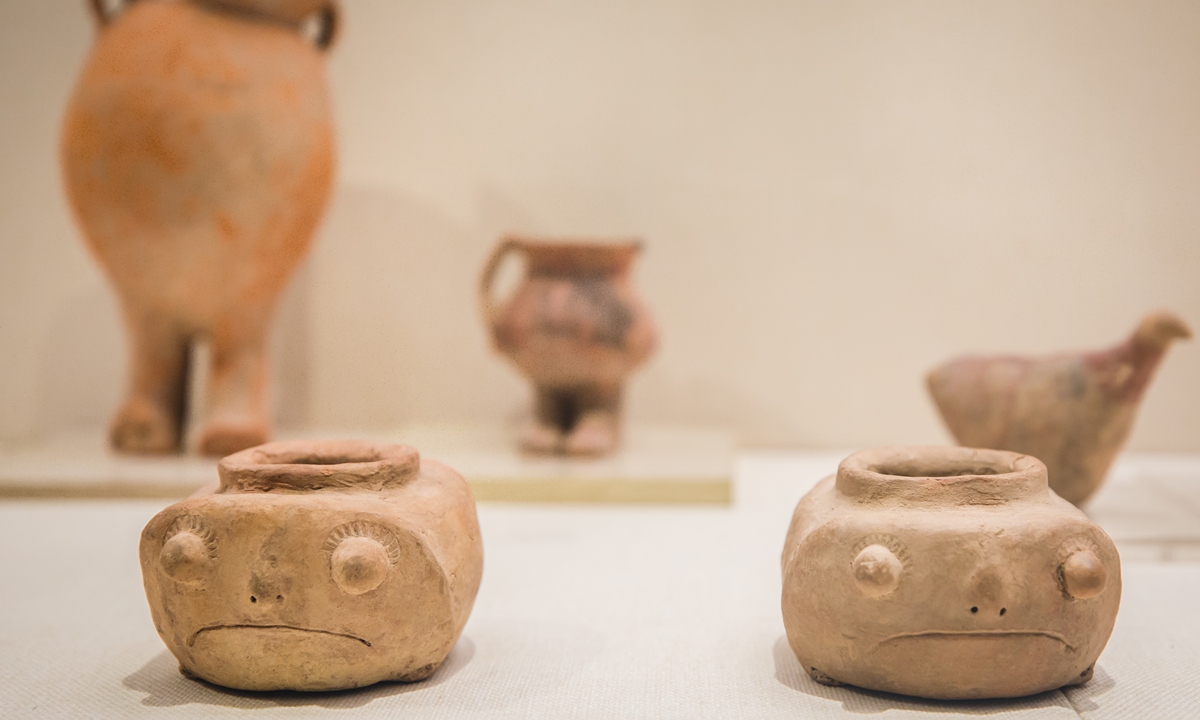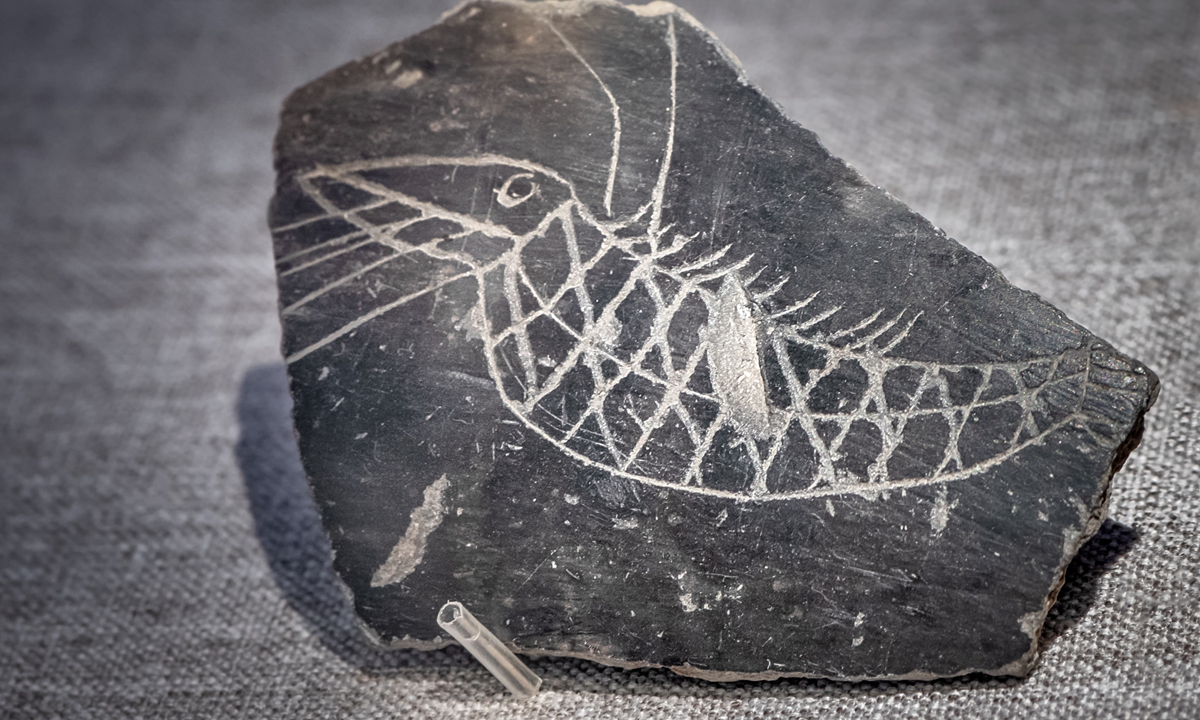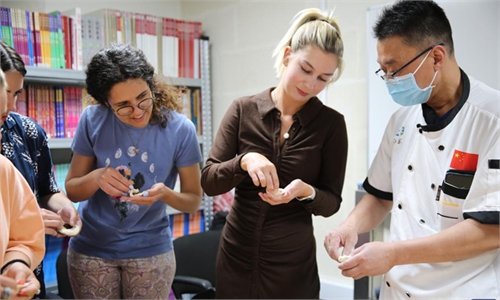ARTS / ART
National program delves into the origins of China’s over 5,000-year-old civilization
Roots of a nation

Jade objects (left) and a stone carving on display at the Liangzhu Museum Photo: VCG

Pots on display at the Gansu Provincial Museum Photo: VCG

Jade objects (left) and a stone carving on display at the Liangzhu Museum Photo: VCG
Editor's Note:Chinese President Xi Jinping recently stressed the importance of furthering the study of Chinese civilization to enhance historical awareness and cultural confidence of the Communist Party of China (CPC) and society, while unswervingly following the path of socialism with Chinese characteristics to realize national rejuvenation.
Xi, also general secretary of the CPC Central Committee, made the remarks during a Friday group study session of the Political Bureau of the CPC Central Committee on a national research program dedicated to tracing the origins of Chinese civilization.
Through archaeological finds and research in various fields, including physics, chemistry and even biology, the program has proven that China has a civilization that dates back more than 5,000 years.
The Global Times spoke with a number of Chinese scholars and experts, so they break down the large program and give readers a detailed and clear view of its accomplishments.
China's largest comprehensive, multi-disciplinary research program, the Chinese Civilization Origin Program was formally approved in 2001.
Wang Wei, chief expert of the program and president of the Chinese Society of Archaeology, told the Global Times on Sunday that the implementation of the national-level program has pushed back the emergence of Chinese civilization to more than 5,000 years ago.
Additionally, the program has provided historical context to the origin and development of the civilizations in various regions of China and fully demonstrated the achievements of Chinese civilization and its major contributions to world civilization.
The program is divided into four main research topics: dating of archaeological and cultural finds in China's Central Plains from 2500 BC to 1500 BC, the natural environment, social structures and economic and technological development, said Wang.
Program highlights
Some significant archaeological discoveries such as the Yangshao Culture, Archaeological Ruins of Liangzhu City and the Erlitou Site have provided concrete archaeological evidence that have helped the program trace the origins of the Chinese civilization.
The Yangshao Culture, dating to around 7000 BC to 4700 BC and mainly located along the Yellow River in China, was one of the earliest Neolithic cultures in the world.
The flourishing culture, with its distinctive red terracotta products, mainly occupied what is today Northwest China's Shaanxi Province, North China's Shanxi Province and Central China's Henan Province.
The excavation of the Yangshao Site in Henan Province was launched in 1921. This major discovery shook up the popular view at the time that China lacked Stone Age cultures and allowed the world to truly "see" the ancient roots of Chinese civilization, Wang noted.
"It can be said that modern Chinese archaeology was born the day when the Yangshao Culture was discovered. Since then, it has been closely linked to the exploration of the origin of Chinese civilization," said Wang.
The archaeological ruins of Liangzhu City is the largest prehistoric city site in China. It was discovered in the lower reaches of the Yangtze River and dates from around 5,300 to 4,300 years ago. Located near Hangzhou in East China's Zhejiang Province, the site was inscribed as a World Heritage Site in 2019.
The site's value lies in that it shows a regional center with its own cultural characteristics and belief systems had already been established during the late Neolithic Age in China.
"The class division of Liangzhu society was quite serious. It can be seen that the supreme ruler had military command, the power to preside over sacrifices and convey the will of the gods… This shows that it had become a civilized society at that time," Wang said.
"It has many distinctive features that show early civilization existed in China. For example, farming culture had started to become an economic underpinning for society, and also social hierarchies had emerged." Xue Suming, a Chinese cultural archaeologist working in Wuhan, told the Global Times.
The Erlitou Site, which dates back about 3,500 to 3,600 years ago, is located along the banks of the Luohe River south of Erlitou Village in Yanshi county, Central China's Henan Province. Discovered in 1959 by Xu Xusheng, the Erlitou Site is the largest site in the Xia Dynasty (c.2070BC-c.1600BC), the earliest Chinese dynasty.
The remains of the two palaces, a residential area, pottery and bronze workshops, and kilns and tombs were excavated at the site, including a jue, an ancient wine vessel with three legs and a loop handle, which is the oldest bronze vessel ever excavated in China.
"Many features of the culture can be identified through these archaeological discoveries," Wang noted.
"For example, one of its main features is the establishment of kingship, which can be seen in corresponding archaeological remains such as capitals, palaces, tombs, ritual vessels and so on."
Wang said research into the origin of Chinese civilization is a long-term and arduous topic. "Although we have achieved promising results, there are still many issues that need further research… Chinese archaeology will develop in the direction of Chinese features, Chinese styles and Chinese ethos, and further accelerate scientific, international and popular development in the field," he said.



